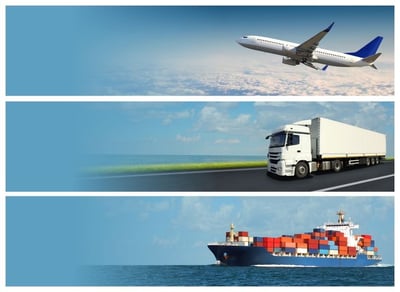IMO2020: Digging into the new sulphur emissions cap
This week, we dive deep into the background and context of IMO2020, putting the 0.5% sulphur emissions cap into greater context, and discussing the economic and environmental impacts of the mandate in greater detail as we move into the last quarter of 2019.
If you missed our first post in this series, read more about the IMO’s forthcoming cap on sulphur emissions here.
Why this mandated decrease?
IMO2020 reflects the industry’s overall pursuit to reduce the number of greenhouse gases and impacts on the environment and climate change.
A look at the scale of the global shipping industry brings the mandate for 0.5% emissions into stark relief.
- More than 90% of global trade happens on the world’s oceans. This means upward of 10,400 oil tankers, 17,000 general cargo ships, and 11,500 bulk cargo ships.
- One major effect of all these ships operating is sulphur oxides (SOx) released into the atmosphere—a greenhouse gas produced from a ship’s consumption of bunker fuel.
- Bunker fuel accounts for 7% of all oil consumed for transportation, or around 3.5 million barrels per day. Burning bunker fuel generates close to 90% of all sulphur emissions globally.
The IMO, or International Marine Organization, is the United Nations agency responsible for ensuring a clean, safe, secure, and efficient global shipping industry. Mandated by the IMO, IMO2020 is a new global sulphur emissions cap of 0.5% enforced worldwide as of January 1, 2020.
Industry impacts of IMO2020
Reports and writing from this summer speculated that there could be fall capacity crunches as shipping companies remove ships from service to either install scrubbers, empty their tanks of 3.5% sulphur fuel, and/or reroute based on fuel costs. Capacity crunches were also predicted due to importers building up stock prior to January 1.
As of this writing, the opinions of industry leaders vary widely. While some experts still predict stock build-ups and capacity issues, others are saying the opposite.
What appears certain is that there will be financial impacts throughout the shipping industry as a result of IMO2020:
- Although the “compliant fuels” market isn’t yet clear for 2020, the industry expects a significant spike in fuel prices.
- Shipping companies who opt for scrubbers are facing substantial investment into that technology.
- The same is true for those who opt for Liquefied Natural Gas (LNG). Although natural gas is a cheap energy, its liquefaction and logistics are very expensive (LNG is stored and transported at -160°C).
Predicted financial impacts
There is a cost involved to help make an impact on climate change – this is one of those costs. Because of the limited visibility on marine fuel markets after January 1st, however, accurate estimation of the financial impact per TEU (twenty foot equivalent unit) is challenging.
Estimates from various sources are relatively similar with some suggesting $160 USD per TEU, some are estimating $153 USD per TEU depending on the trade, and some present a range of $80-$150 USD in increased costs for shippers.
What is consistent across the board is that with fuel prices expected to be 1.5 to 2 times higher, or with large investments to be financed, shipping companies will not be able to absorb the extra cost of IMO2020. The rising costs will be passed through to importers.
The freight market will find a new balance incorporating the new fuel costs. We are watching the fuel market and low sulphur fuel futures market and will keep you apprised as things begin to change.
Environmental impacts of IMO2020 Sulpher Cap
And now for the good news: the IMO’s new limit of 0.5% will result in a reduction of over 80% of sulphur emissions.
This cap is just one part of a larger long-term initiative to reduce sulphur emissions. The current limit of 3.5% was the result of another mandated decrease from 4.5% in 2012. Yet another decrease in sulphur emissions (to 0.1%) is expected to be phased in over the next several years.
Similarly, nitrogen oxide emissions are currently being regulated on North American vessels built after 2015, which will be followed by Northern European vessels and others in the coming 5-10 years. Also, in April 2018, the IMO adopted a roadmap for CO2 emissions toward a 50% (or more) reduction between now and 2050.
IMO2020 is part of a global movement toward more environmentally responsible transportation. And it’s not without precedent.
In 1990, the U.S. introduced the Clean Air Act which called for the complete removal of lead from gasoline. It gave the industry years to implement and adapt. Now, we no longer see Leaded and Unleaded fuel options.
So, even though uncertainty and increased costs of IMO2020 loom ahead and the short term impacts will be felt, there will come a time when we will have forgotten that high sulphur fuel was an industry norm.
Learn More from an Expert Today
IMO2020 represents change and as Greek philosopher Heraclitus said: change is the only constant in life.
The more prepared you are to meet the unknowns and potential disruption of this shift, the smoother the transition will be. In our 60 years in the industry, Cole has navigated through significant change like this.
With half a century of international shipping and freight experience, we are your full-service freight partner. Contact our freight department today for an experienced partner ready to offer practical support as your shipping operations adapt to IMO2020.
Keeping you in the loop. It's what we do.

Latest Articles
- Watch out for these extra charges on your freight bill
- Key differences between duty drawbacks and duty refunds for importers
- Mitigating container shortages and rising shipping prices for ocean imports
- How Canadian importers benefit from end use tariff codes and conditional relief
- The benefits of operating as a Non-Resident Importer in Canada
